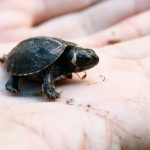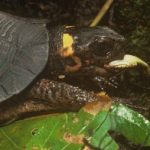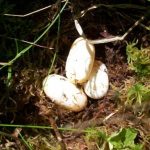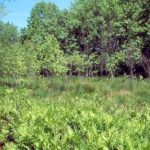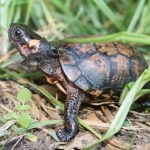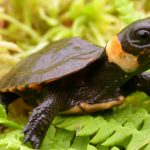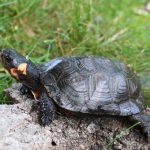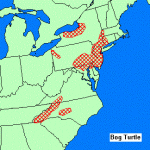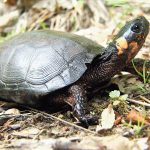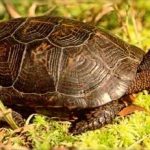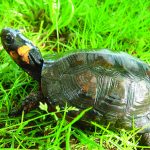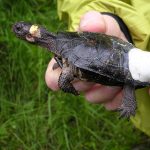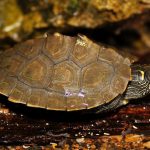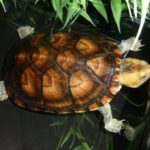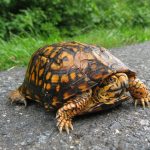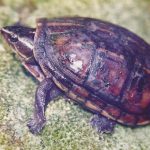Bog Turtle
Bog turtles are an endangered species of semiaquatic turtles, found only in the eastern United States. They are the smallest among the other North American turtles. These turtles are omnivorous, solitary, and diurnal.
| Kingdom | Animalia |
| Phylum | Chordata |
| Subphylum | Vertebrata |
| Class | Reptilia |
| Order | Testudines |
| Family | Emydidae |
| Subfamily | Emydinae |
| Genus | Glyptemys |
| Scientific Name | Glyptemys muhlenbergii |
| Other Names | Muhlenberg’s Turtle |
| Size | Male: Around 9.4 cm Female: Around 8.9 cm |
| Weight | Around 110g |
| Color | Dark brown skin and shell with dark brown to black head; marked yellow, orange or red blotches on each side of the head and neck; cream and black blotches on the underside; some specimens have an orange-red wash on the inside of the legs |
| Distribution | New York, Massachusetts, Tennessee, Georgia, Connecticut, Delaware, Maryland, North Carolina, South Carolina, Virginia |
| Habitat | Deep soft muck soils, cool, shallow, slow-moving water, calcareous wetlands including meadows, marshes, bogs, spring seeps; edge of woods |
| Diet | Aquatic plants like duckweed, seeds, berries, earthworms, slugs, insects, snails, other invertebrates, frogs, other small vertebrates |
| Hibernation Fact | Hibernate during winter in groups or alone |
| Predators | Snakes, snapping turtles, striped skunks, foxes, raccoons, dogs |
| Breeding Season | Spring |
| Mode of Reproduction | Oviparous (egg laying) |
| Clutch Size | 1 to 6 eggs |
| Incubation Period | 42 – 80 days |
| Reproductive Age | 8 to 11 years of age |
| Average Lifespan | 20 to 30 years; however, maximum lifespan is 50 years or more |
| IUCN Conservation Status | Critically Endangered |
Bog Turtle Pictures Gallery
- Baby Bog Turtle
- Bog Turtle Diet
- Bog Turtle Eggs
- Bog Turtle Habitat
- Bog Turtle Images
- Bog Turtle Photos
- Bog Turtle Pictures
- Bog Turtle Range
- Bog Turtles
- Glyptemys Muhlenbergii
- The Bog Turtle
- Bog Turtle Size


